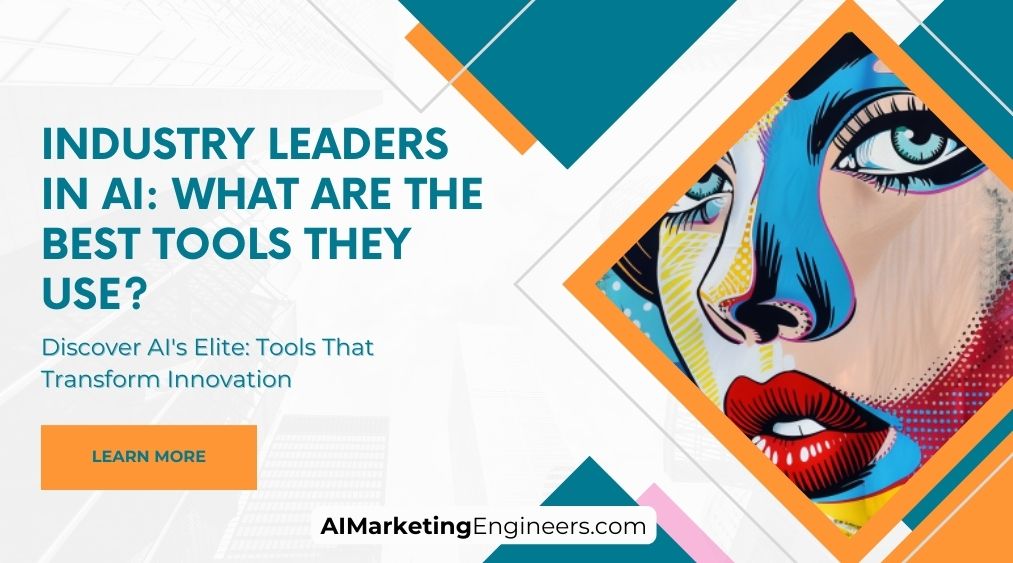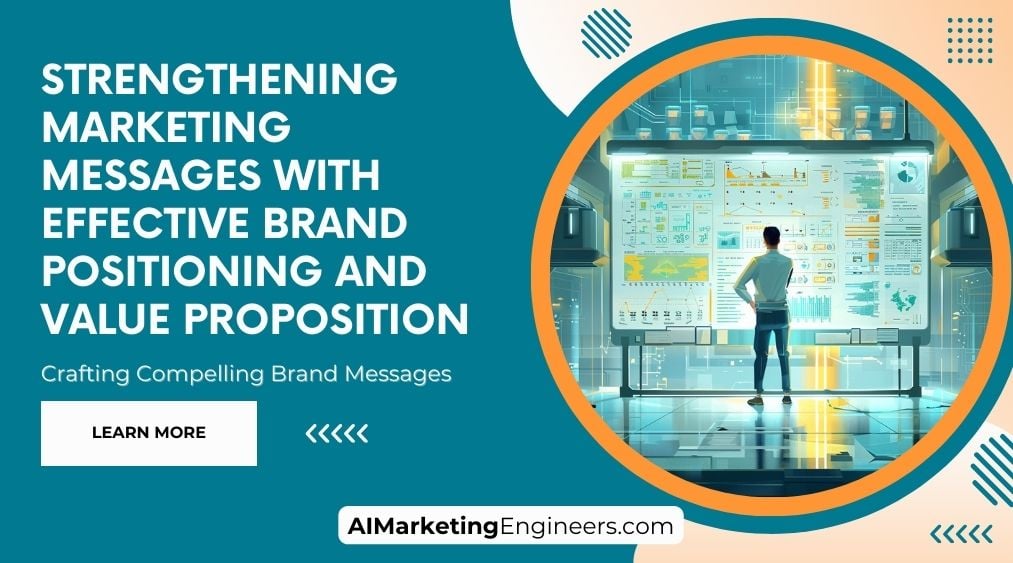Key Takeaways
✅ Industry Leaders' AI Tools: The AI toolkit of industry leaders is as varied as it is powerful. Have you ever wondered what supports the AI endeavors of giants like Google and Amazon? They count on machine learning libraries such as TensorFlow and PyTorch, which are the building blocks of their AI solutions. These tools make the complex simple and the impossible possible, with every line of code driving us further into the future.
✅ Collaboration & Scalability: Have you ever tried to build something great alone? It's tough, isn't it? AI leaders know this. That's why they choose tools like Git for teamwork and platforms like AWS for growing their dreams without limits. It's not just about having the best tools; it's about sharing them with the right people and watching your project soar to new heights.
✅ AI Interpretability & Monitoring: Ever worry that AI is a bit like magic – mysterious and unfathomable? Leaders in AI don't leave anything to chance. Tools like SHAP and Aporia work like a charm, bringing clarity to the decisions AI makes. Understanding the 'why' behind AI's 'how' is the golden key to trust and transparency in technology.
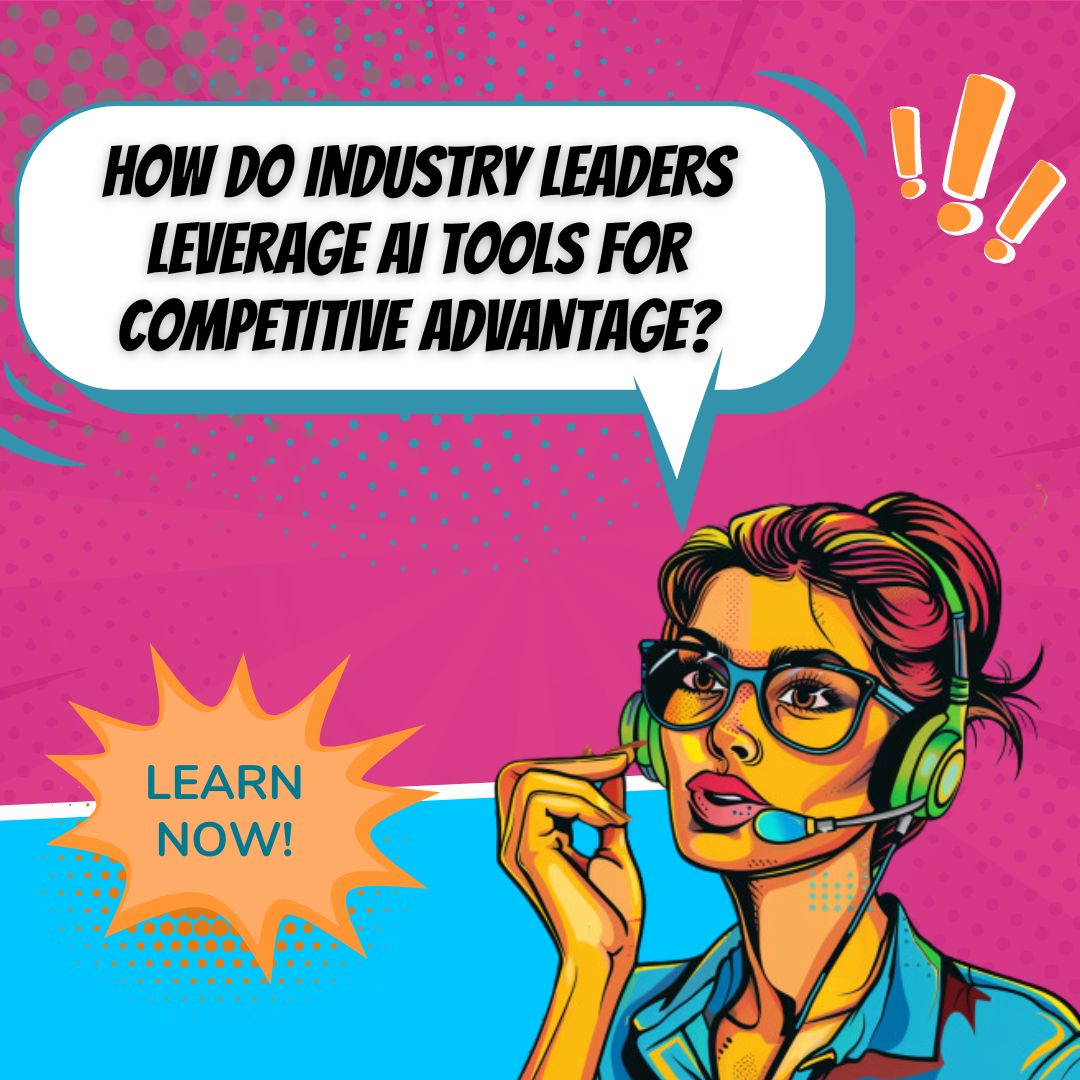
Introduction
Ever stopped to think about the engines that power the giants? What's under the hood of the tech titans—companies that are not just driving but defining our future with Artificial Intelligence? This isn't about sci-fi anymore; it's the reality of AI in modern industries. Today's leaders aren't magicians with secret spells; they use real, tangible tools that keep them at the forefront of innovation.
It's one thing to know AI exists; it's another to understand the tools that make it thrive. How can these tools rev up your own AI journey? What can industry leaders teach you about machine learning libraries or the versatility of natural language processing tools? Well, if you're curious to peek behind the curtain, you're in luck. In this article, we're not just listing out cool gadgets and gizmos. We're offering insights that could be your launchpad to outpacing competitors and potentially skyrocketing your revenue, ROAS, or ROI.
Stick around, as we're about to unfold actionable insights and groundbreaking information that can transform the way you think about AI. Fancy a sneak peek into the toolbox of the successful? Let’s dive in.

Top Statistics
| Statistic | Insight |
|---|---|
| AI Market Growth: Expected to grow from $62.35 billion in 2020 to $997.77 billion by 2028, at a CAGR of 38.1%. (Source: Grand View Research, 2021) | Witnessing such explosive growth, industries are clamoring to integrate AI into their operations, foretelling a future where AI is ubiquitous in the business landscape. |
| Popular AI Tools: TensorFlow, PyTorch, and Keras are among the most beloved tools. (Source: KDnuggets, 2020) | These tools sit at the forefront of innovation, offering flexibility and power to those seeking to push the boundaries of what AI can do. |
| AI Job Growth: AI-related job postings have shot up by 32% annually over the past few years. (Source: LinkedIn, 2021) | For those with the skills, or the courage to learn them, the burgeoning AI field offers an ever-growing buffet of career opportunities. |
| AI Investments: Funding in AI startups hit a high-water mark of $73.5 billion in 2020, a 40% leap from the previous year. (Source: CB Insights, 2021) | This surge in investment signals a robust confidence in the field's potential, dangling the carrot of innovation and growth before startups and old hands alike. |
| AI Talent Shortage: A solid 65% of AI folk agree - there aren't enough AI wizards around, and 78% reckon that won't change anytime soon. (Source: Gartner, 2020) | The hunt for talent is fierce, creating a seller's market for those who've got the smarts to work with smart machines. |
Machine Learning Libraries: TensorFlow and PyTorch
Ever wonder what makes your smartphone's face recognition tick or how cars manage to drive themselves these days? It's all thanks to machine learning. And, at the heart of machine learning, there are libraries like TensorFlow. You might've heard the term floating around, especially if you're into tech. Created by the folks at Google, it’s kind of a big deal for creating complex algorithms that can, say, help a computer learn how to recognize your doodles. Big names like Google, Airbnb, and Uber use it to make their machines learn stuff.
Then there's PyTorch. You know how sometimes things need to be tweaked and adjusted to work just right? Well, PyTorch is all about giving developers that flexibility. It's like having a box of Legos; you can build and reshape your model as you go. Facebook, Twitter, and even heavyweight NVIDIA are all in on this one, using it to drive their artificial brains.
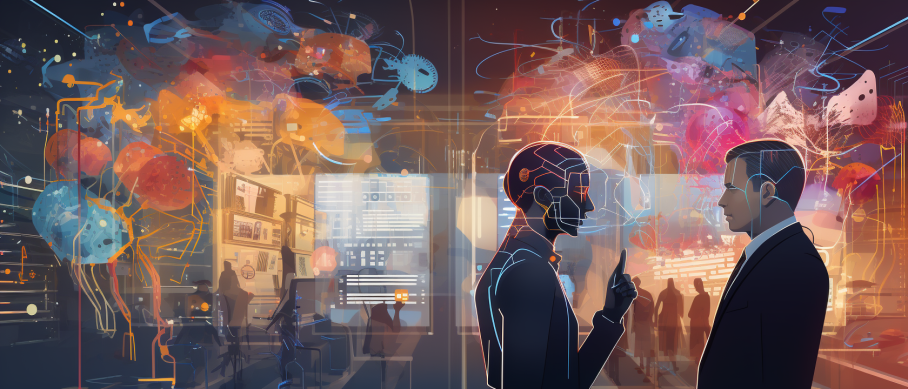
Data Visualization Tools
Now, all this data we're talking about isn't much good if we can't understand it. That's where Tableau comes in. It’s the tool you turn to when you have a mass of data and you need to make sense of it fast. Imagine a dashboard full of charts and graphs that tell you everything you need to know at a glance. Amazon and Coca-Cola swear by it to make their big data understandable.
And let's not forget about Matplotlib, the trusty sidekick for anyone working with Python. It's like the artist that takes your complicated data and turns it into a gallery-worthy masterpiece. While it might not be grabbing headlines, it's the unsung hero behind the scenes, helping researchers paint the big picture.
Natural Language Processing Tools: spaCy and NLTK
Communicating with computers in our human language, that's the dream, right? This is the playground of natural language processing (NLP) tools like spaCy and NLTK. spaCy is a bit like that smart friend who knows a bunch of languages and processes them quickly. It's got speed and is pretty popular in the tech world, with Airbnb and Reddit among its users.
NLTK, on the other hand, is the old guard of NLP in Python—more of a learning tool that's been a stepping stone for many who are diving into this fascinating world of AI communication. It might not be as fast as spaCy, but it's a treasure trove for academics and up-and-comers in the AI field.
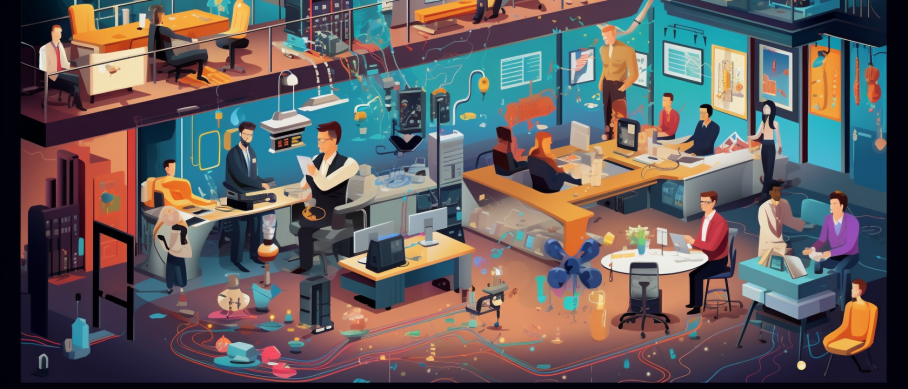
Cloud Computing Platforms
The cloud is like this vast expanse where you can store all your stuff without worrying about losing it. Amazon Web Services (AWS) is like a behemoth in this space, offering a toolbox so wide that you could get lost in it. Netflix and Expedia are some of the big guns that have built their digital empires on AWS.
Then there's Google Cloud Platform. It's kind of like having Google’s own genius at your fingertips. You want to launch your app or service with the know-how of Silicon Valley's finest? Google Cloud Platform is your go-to, and it's trusted by folks like Spotify and Twitter.
Big Data Analytics Tools
In a world drowning in data, tools like Apache Spark and Apache Hadoop are like lifeboats. They let you sift through mountains of data at lightning speed. Spark, well, it’s fast—as in 'race car in a straight line' fast when it comes to processing data. It's why companies with data coming out of their ears like Yahoo and eBay are using it.
Hadoop is more like the wise turtle; not the fastest, but it can handle massive datasets without breaking a sweat. Facebook and Yahoo? They've been using it for big, complex jobs that would make lesser software keel over. It’s all about managing the flow of that big data river flowing through the digital landscape.
So hey, when you're next swiping through your phone, or shouting at your smart speaker to play some tunes, spare a thought for these tools. They're the unsung heroes making sense of the chaos, understanding our chatter, and crunching the numbers to make our tech smarter. Curious about using one? Or maybe you've got your eye on a career in AI? It's these tools that might just give you that edge you're looking for. They might sound a bit daunting, but who knows, they could be the leg-up you need to take part in shaping our digital future. How cool would that be?

AI Marketing Engineers Recommendation
Recommendation 1: Use machine learning platforms like TensorFlow or PyTorch to analyze consumer behavior. TensorFlow provides a suite of tools for large-scale machine learning tasks, while PyTorch is celebrated for its ease in prototype development and its use in cutting-edge research. These platforms can help you predict future trends by sifting through data to uncover patterns, which can transform how you connect with your customer base. How about using these insights to tailor your next marketing campaign?
Recommendation 2: Leverage AI-driven analytics tools like Google Analytics 4 (GA4) for deeper insights into user interactions. With its machine learning core, GA4 can help you automatically uncover insights from your data you might not have even thought to look for. It's about not just knowing your audience, but really understanding them. What new, unexpected opportunities might you uncover in your audience's behavior?
Recommendation 3: Adopt conversational AI tools such as Chatbots and virtual assistants to enhance customer service. Tools like these can learn from customer interactions to provide a more personal touch, and they're available 24/7. Plus, they free up your team to tackle more complex tasks. Just imagine the level of service you could provide if you always had a friendly assistant on hand to help your customers!
Relevant Links
Maximize Your Machine Learning Abilities
- Harness the Power of TensorFlow: The Ultimate Guide
- Unleashing Creativity with PyTorch: Your Path to AI Mastery
Data Visualization Mastery
- Become a Data Wiz with Tableau: Visualize Success
- Turn Your Data into Stories with Matplotlib
Natural Language Processing Unlocked
- Speak the Language of AI with spaCy
- Delve into NLP: Mastering NLTK
Cloud Computing Demystified
- Elevate Your Project with Amazon Web Services
- Google Cloud Platform: The Sky's the Limit
Big Data Analytics at Your Fingertips
- Accelerate Insights with Apache Spark
- Harnessing the Power of Apache Hadoop
Conclusion
So, we've spent some time exploring the toolkit of the giants in AI, and isn't it a bit like peering into a wizard's bag? We found TensorFlow and PyTorch casting spells in machine learning, Tableau and Matplotlib painting the future with data visuals, spaCy and NLTK teaching computers the nuances of human language, while AWS and Google Cloud Platform lift ideas into the stratosphere with their mighty cloud capabilities. And for wrangling big data, Apache Spark and Apache Hadoop are the workhorses of the digital frontier.
But you might wonder, why does all this matter to us? Well, whether you’re a budding entrepreneur, a developer, or just someone fascinated by how these tools shape our world, knowing what the best in the biz are using can give you a roadmap for success. Are you ready to pick up these tools and see what you can create, or how they can help your business grow?
Imagine the possibilities when you harness the same power as the industry leaders. What problems could you solve? What innovations could you bring to life? Remember, today's AI tools are not just for the tech elite; they're for anyone curious enough to dive in and bold enough to dream big. So, how will you transform your tomorrow with the knowledge of today's AI technology?

FAQs
Question 1: Who are the top industry leaders in AI?
Answer: The big names in AI include giants like Google, Amazon, Microsoft, IBM, and Facebook, plus research hotshots like Perplexity.
Question 2: What are the foundational AI tools used by industry leaders?
Answer: They're all about TensorFlow, PyTorch, Keras, Scikit-learn, and Apache Spark for the brainy machine learning stuff, and hands-on tools like OpenCV, Pandas, and NumPy for slicing and dicing data.
Question 3: How do industry leaders handle large-scale data processing?
Answer: With a beastly amount of data comes the need for muscle – and they've got Apache Hadoop, Apache Spark, and Amazon SageMaker for the heavy lifting in data processing and machine learning.
Question 4: What are some advanced AI tools used by industry leaders?
Answer: For top gear performance, they rev up with NVIDIA's CUDA, TPUs, and DLSS, not to mention Ray, Horovod, and MXNet for getting their AI into shape across gym… I mean, across servers.
Question 5: How do industry leaders manage AI development workflows?
Answer: It's all about teamwork and smooth workflows with version control champs like Git, GitHub, GitLab, and CI/CD heroes like Jenkins, Travis CI, and CircleCI.
Question 6: What are some popular AI libraries and frameworks used by industry leaders?
Answer: It's a fan club of the usual suspects – TensorFlow, PyTorch, Keras, Scikit-learn, Caffe, OpenCV, Pandas, and NumPy get the VIP badges for ML and data work.
Question 7: How do industry leaders ensure the privacy and security of AI systems?
Answer: They're like digital locksmiths, using techniques like encryption, access control, data anonymization, and Fort Knox-like storage solutions such as Amazon S3 and Google Cloud Storage.
Question 8: What are some practical tips for professionals looking to use AI tools like industry leaders?
Answer: Get ready for some skill-building – stay fresh with the latest AI research, buff up on math and coding, and hands-on learning with AI tools and frameworks through online learning and projects.
Question 9: What are some emerging AI tools and technologies used by industry leaders?
Answer: The new kids on the block include AutoML, Federated Learning, and Reinforcement Learning, with Ray and Horovod for team training and NVIDIA's TPUs for putting the pedal to the metal in machine learning.
Question 10: What are some relevant hashtags for staying updated on AI tools and industry leaders?
Answer: To keep your feed buzzing with AI chatter, pepper in hashtags like #AI, #MachineLearning, #DeepLearning, #DataScience, #ArtificialIntelligence, #ML, #DL, #IndustryLeaders, and #AItools.

Academic References
- Goodfellow, I., Bengio, Y., & Courville, A. (2016). Deep Learning. MIT Press. This essential book lays the groundwork for understanding deep learning techniques and how they're applied across various fields. The authors showcase crucial tools such as TensorFlow, PyTorch, and Keras that are instrumental in crafting and training deep neural networks.
- Domingos, P. (2015). The Master Algorithm: How the Quest for the Ultimate Learning Machine Will Remake Our World. Basic Books. Domingos embarks on an engaging journey to identify a universal learning algorithm. The discussion brings to light machine learning instruments like scikit-learn, Weka, and Apache Mahout, highlighting their significance in the data science sphere.
- Sutton, R. S., & Barto, A. G. (2018). Reinforcement Learning: An Introduction. MIT Press. This book is a gateway to understanding the foundational concepts and methodologies within reinforcement learning. It points to pivotal tools such as OpenAI Gym, Ray, and TensorForce which are vital for devising and evaluating algorithms in this area.
- Bird, S., Klein, E., & Loper, E. (2009). Natural Language Processing with Python: Analyzing Text with the Natural Language Toolkit. O'Reilly Media. Focusing on natural language processing, this text delves into the manipulation and understanding of human language using Python. Tools like NLTK, spaCy, and Stanford CoreNLP are highlighted for their utility in tasks such as text classification and sentiment analysis.
- Munro, R. (2019). Human-in-the-Loop Machine Learning. O'Reilly Media. Munro discusses the intertwining roles of AI systems and human feedback. He emphasizes tools like Labelbox, Prodigy, and Snorkel, explaining their significance in annotating and improving the data that ultimately enhance AI models.
